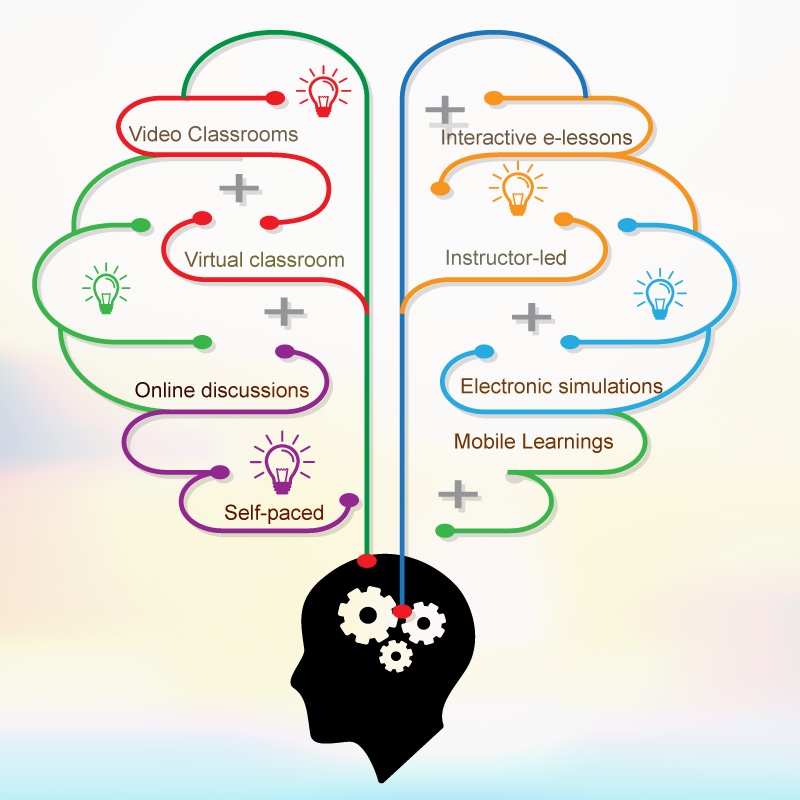Tips On Choosing eLearning Programs That Can Help You Thrive
The concept of eLearning is approximately two decades in the making and almost venerated currently as the only logical replacement for traditional face-to-face or classroom-led training practices. eLearning is deemed firstly as the ultimate solution to combat the disruptive forces that corporate environments of the Fourth Industrial Revolution pose onto learning practices, and, secondly, is used as a targeted tool to leverage upon the technological evolvement advantages that this digital era brought to training mechanisms in our world of work.
As with any mainstream trend, the garden variety of solutions, products, platforms, and programs available, are as overwhelming as a Black Friday Sale. Whether one is an "e-novice" considering including eLearning into their training strategy for the first time, or an "e-stalwart" contemplating to enhance their current eLearning program, choosing the most viable option is no small feat. Service providers are aggressively promoting virtual eLearning utopias with interactive, adaptive, and engaging SEO-tagged promises in the race to attract and secure new clients.
Among this deafening marketing noise, one has difficulty to distinguish between the "what is right" and the "what is fly by night" pertaining to eLearning program solutions.
What Is HOT And What Is NOT?
Digital learning provides several training and development benefits such as infinite reach, cost savings, time flexibility, zero location constraints, and economies of scale. However, the qualitative value of a program should be carefully analyzed before signing on the dotted line of the service level agreement.
Ever wondered why some eLearning implementations result in epic failures, while others hit the bulls-eye in training transformation? The fact is simply that not all eLearning is created equal. Therefore, steering clear of boring, repetitive, unengaging, and generic programs will shift the pre-conceived opinions of your participants from eLearning as a drag to learning being fab!
Successful learning outcomes with sustainable progression in employee development can only be achieved by adopting to smarter learning initiatives with performance driven methodologies, creating learning activities with purpose and meaning to engage participants, and designing content resembling authenticity and credibility. "Fake it till you make it" with excessive narration usage, clicks for tricks, and reliance on quizzes and assessments as illusions of interactivity, are guaranteed to lead to "zero return on effort" results.
Corporate Uniformity Or Personal Employee Customization
The benefits of microlearning, just-in-time learning, MOOCs, COOCs, gamification, mLearning or even Tubing are inundating the guidelines, reviews, 'how to' blogs and 'how not to' chatter in the public domain. At some point during the training research journey, one needs to choose between standardized corporate eLearning to empower the group, or customized personal eLearning to elevate individual development.
On the one hand, one is faced with the risks of forfeiting engagement, authenticity, and flexibility gains when adopting a standardized approach to eLearning practices. On the other hand, you need to contend with the challenges of a multi-generational employee composition, impracticalities of customization to cater to individual training needs, and the amplified cost implications to be incurred when opting for a personalized training directive.
Perhaps a reverse engineering tactic will provide clarity by identifying the anticipated learning end result first, and then figuring out the rest.
For example, in a factory where safety standards and protocols should be known by all employees, corporate eLearning functionalities are optimal. Similarly, in the case of financial services organizations where industry regulations, tax amendments, and changes in legalities are vital information for all employees in the group. In other industries, such as creative agencies, design enterprises or event companies, personalized eLearning programs will effect noteworthy training benefits and competency improvements more so than a generic program would.
Unpacking Individualized eLearning
Crafting eLearning programs focused on an individual’s growth, upskilling, cross-skilling or re-skilling must be aligned in accordance to their personal development plan, thus inclusive of SMART (specific, measurable, attainable, relevant, timed) action plans and milestones.
Personal customization of eLearning programs reaches far beyond an avatar change on a login page. Apart from adopting each program to the User Interface flexibility, interaction level preferences or participant location and current skill proficiency, a truly customized eLearning program can also resonate with causes or interests that employees are passionate about, which will amplify the overall learner experience in a very positive manner. A pro-active way of gathering information about learners’ lives outside of work is to ask a question like, "Please include your hobbies on your CV" during the job application process.
Herein lies a perfect opportunity for standardization tactics within the bigger realm of customization strategies. Based on resume information regarding hobbies and interests, collective learner groups can be formed to add to their desire for community interaction and involvement, even within an individualized learning environment, which may significantly raise the effectiveness of your program.
The silver bullet of success lies in finding learning preference commonalities within each group of learners and focusing curriculum design to appeal to those "common ground" requirements.
Individualized eLearning: Pros And Cons
Customized eLearning catering for the individual, as opposed to the masses, renders a powerful array of learning advantages such as increased engagement, improved content retention, higher anticipation, and subsequent enjoyment, as well as establishing a sense of purpose (worthiness) within each learner.
On the flip side though, individually designed programs are far costlier than their corporate generic counterparts, and the complexity of populating assessments results into manageable data sets for monitoring purposes may involve exuberant time and development resources.
eLearning: Adapt To Gain
The necessity of eLearning programs for organizations in our Future World of Work is undeniable. Incorporating digital learning ingenuities are "must-haves" in professional development programs these days in comparison to the "nice to have", shiny but optional learning tools of a few years back.








